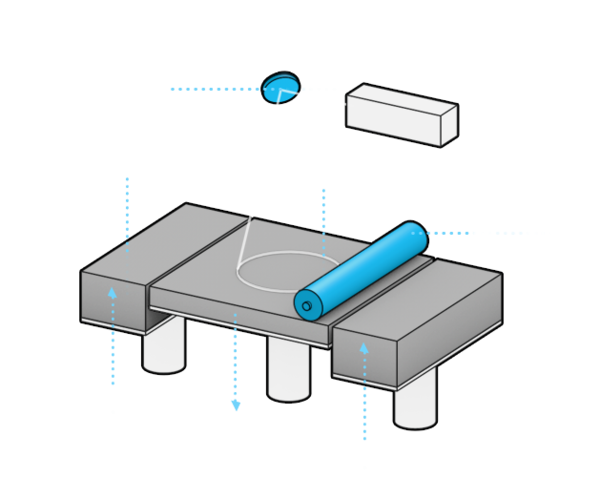Laser Sintering (SLS)
Selective laser sintering (SLS) is a generative process in which thin layers are connected to create a finished product. SLS is very similar to stereolithography. The main difference is that SLS uses polyamide powder as a medium instead of the liquid photopolymers. Selective laser sintering can be used to create any three-dimensional object efficiently and flexibly without having to resort to tools or having to program paths for the milling machines.
In the selective laser sintering process, a powder forms the basic raw material for the finished model. The powder is melted and connected locally by a laser that sketches out a cross-section obtained from the converted CAD- or STL-data. After a cross-section has been formed, it is lowered by the amount of its own thickness (0.15mm) and coated with more powder. The laser then traces out the next cross-section, which adheres to the one below it, and thus allows the process to repeat itself until a finished model is created.
Due to the granularity of the powder, the surfaces produced are somewhat rough. SLS prototypes are, however, stronger and less affected by temperature changes than the prototypes produced using the stereolithography process. SLS prototypes are therefore more suitable for functionality tests.


